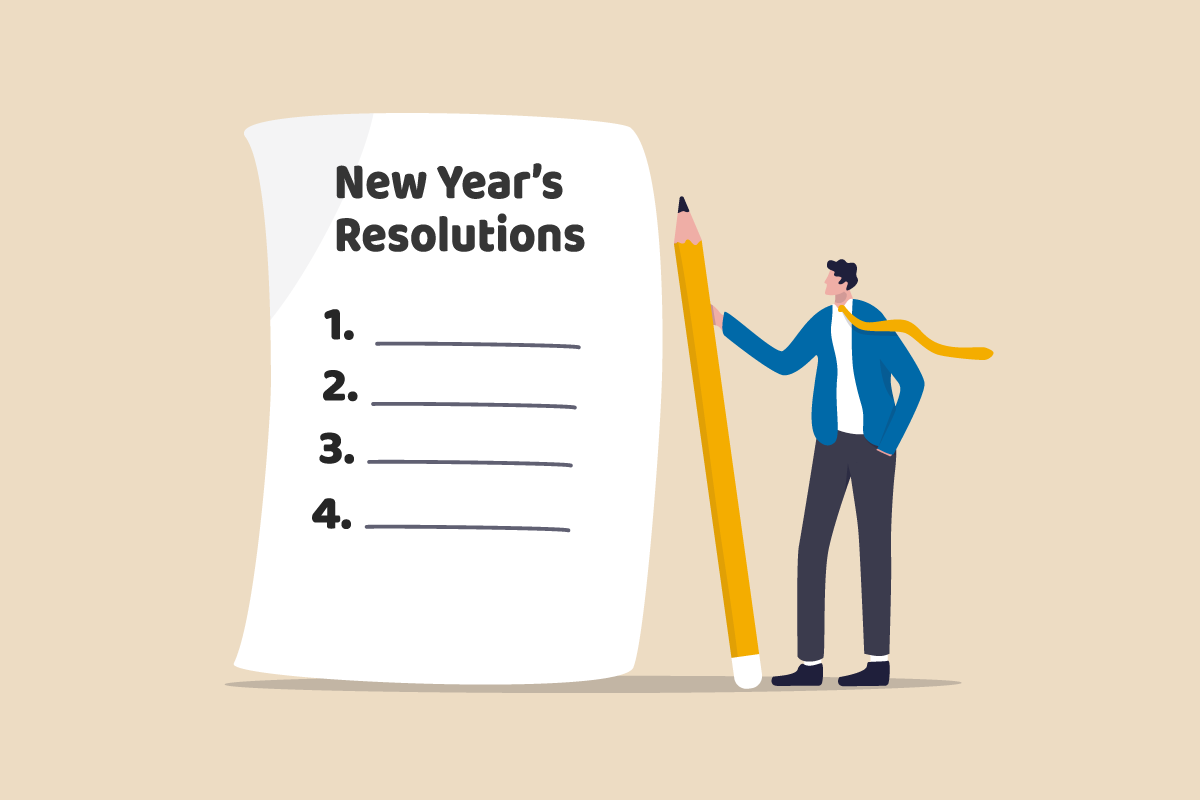The end of the year is a time to look back and set intentions for the year ahead. By making resolutions, we’re essentially telling our brain, “This is important; pay attention to this.”
A resolution creates a kind of mental bookmark or filter that helps us notice opportunities or challenges throughout our day.
It’s like when you buy a certain model of truck. You suddenly notice that same model everywhere on the road. The trucks were always there, but now your brain is tuned to spot them.
In the same way, making a resolution about, say, procrastinating less, might make you more aware of situations that make you delay and give you more opportunities to practice that skill.
Change is rarely linear. Sometimes we notice something and aren’t ready to change it right away. But that noticing plants a seed that might grow later when the conditions are right.
10 Resolutions to Improve Sales Team Performance
Here are 10 suggested resolutions for sales leaders. Don’t think of this list as “I must completely transform myself and my sales team starting January 1st.” Instead, consider these resolutions something to aim for that will ultimately give you and your sales team a strong foundation for success in 2025.
1. Create and refine a standardized sales process.
A well-documented sales process eliminates guesswork and ensures consistency across your team. It establishes a common language and provides clarity on where opportunities are in the funnel. Research shows 95% of successful sales teams closely adhere to a sales process.
Map out each stage from prospecting to closing—including specific actions, resources, and checkpoints at each step—then iterate based on what works.
2. Invest in ongoing sales training and development.
A sales training program will take the guesswork out of improving sales performance and equip your team to control the sales process from start to finish.
Training shouldn’t be a one-time event but rather a continuous journey. Focus on both hard skills like product knowledge and soft skills like asking the right questions, building trust, and negotiation.
3. Use data and analytics to inform decision-making.
Move beyond gut feelings by leveraging sales metrics like conversion rates, sales velocity, and win rates. Set up regular reporting cadences and teach your team to use data storytelling to identify trends and opportunities.
4. Encourage collaboration and knowledge sharing within the team.
Create structured opportunities for top performers to share their successful strategies and lessons learned. Consider implementing a mentorship program and regular win-loss analysis sessions where the team can learn from both successes and failures.
5. Implement and optimize a CRM system for better lead management.
A well-maintained CRM is your team’s single source of truth. Integrating your sales process into your CRM can improve sales process adherence, customer retention, and sales productivity. Ensure high adoption by involving your team in CRM customization decisions and regularly cleaning data to maintain its value.
6. Regularly review and optimize your sales funnel.
Effective sales pipeline management is important for optimizing your sales team’s performance. Conduct monthly funnel analyses to identify and address bottlenecks. Pay special attention to conversion rates between stages and time spent in each phase to spot opportunities for improvement.
7. Foster a culture of continuous improvement.
Create an environment where feedback is welcomed and mistakes are viewed as learning opportunities. Implement regular retrospectives and encourage experimentation with new approaches and technologies.
8. Encourage time management and prioritization skills.
Time management lets your sellers focus on high-value activities. It’s a discipline that the most successful salespeople have mastered. Teach your team to eliminate non-essential tasks and use time-blocking techniques. Consider using a scoring system to prioritize leads and streamline daily activities.
9. Provide the necessary tools and resources for your team to succeed.
Regularly audit your sales tech stack to ensure it meets your team’s needs. Investment in the right tools, from prospecting software to proposal automation, can significantly improve productivity and win rates.
10. Lead by example, demonstrating the behaviors you want to see.
Actions speak louder than words. Actively participate in training sessions, share your own learning experiences, and maintain high standards in your own sales practices. Show vulnerability by admitting your own mistakes and sharing how you learned from them.
Set Your Intention for Sales Success in 2025
Whether you have a team of seasoned pros or new talent in need of guidance, addressing these resolutions can provide the foundation for more consistent performance across your entire sales organization.
But don’t think of them as pass/fail challenges. Use them like a compass pointing in a general direction and a reminder of what you want to pay attention to.
Need a hand? See how our award-winning sales training programs can improve sales performance in 2025 and beyond.




